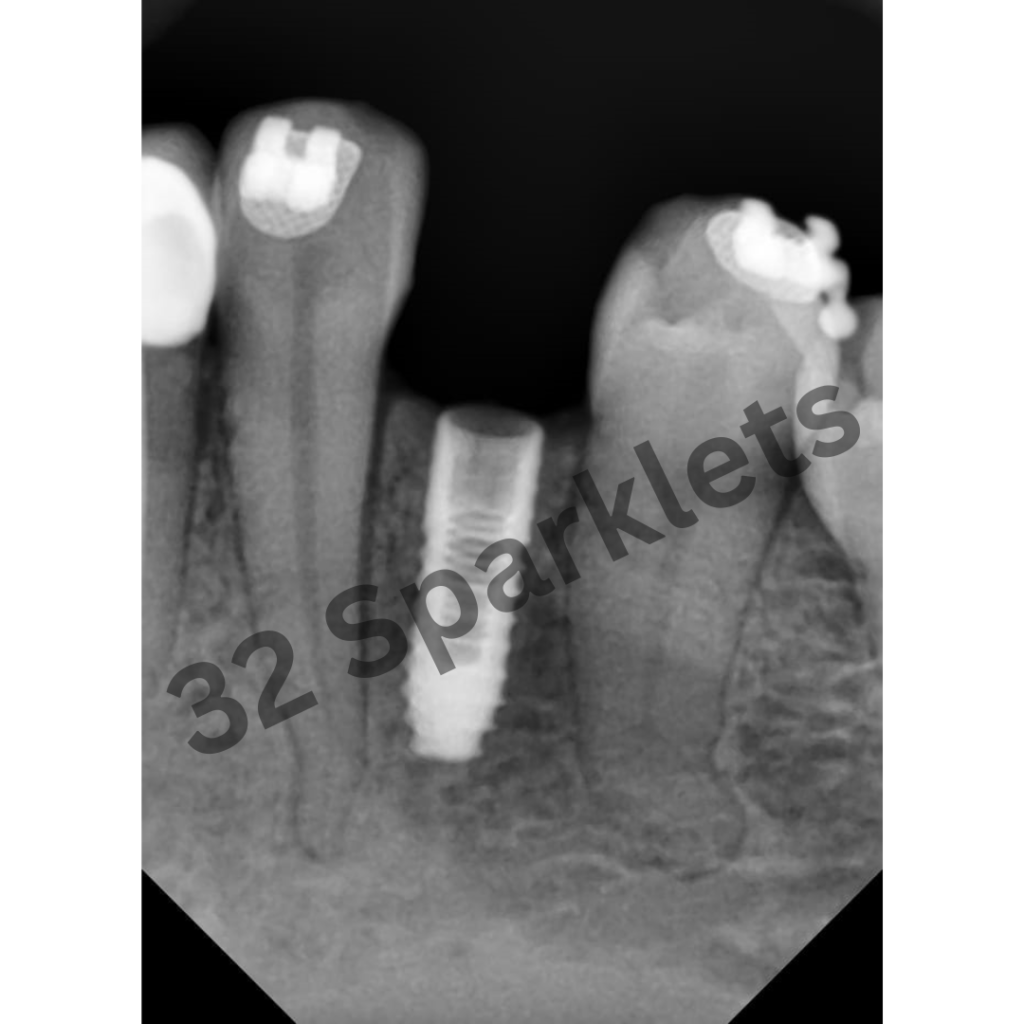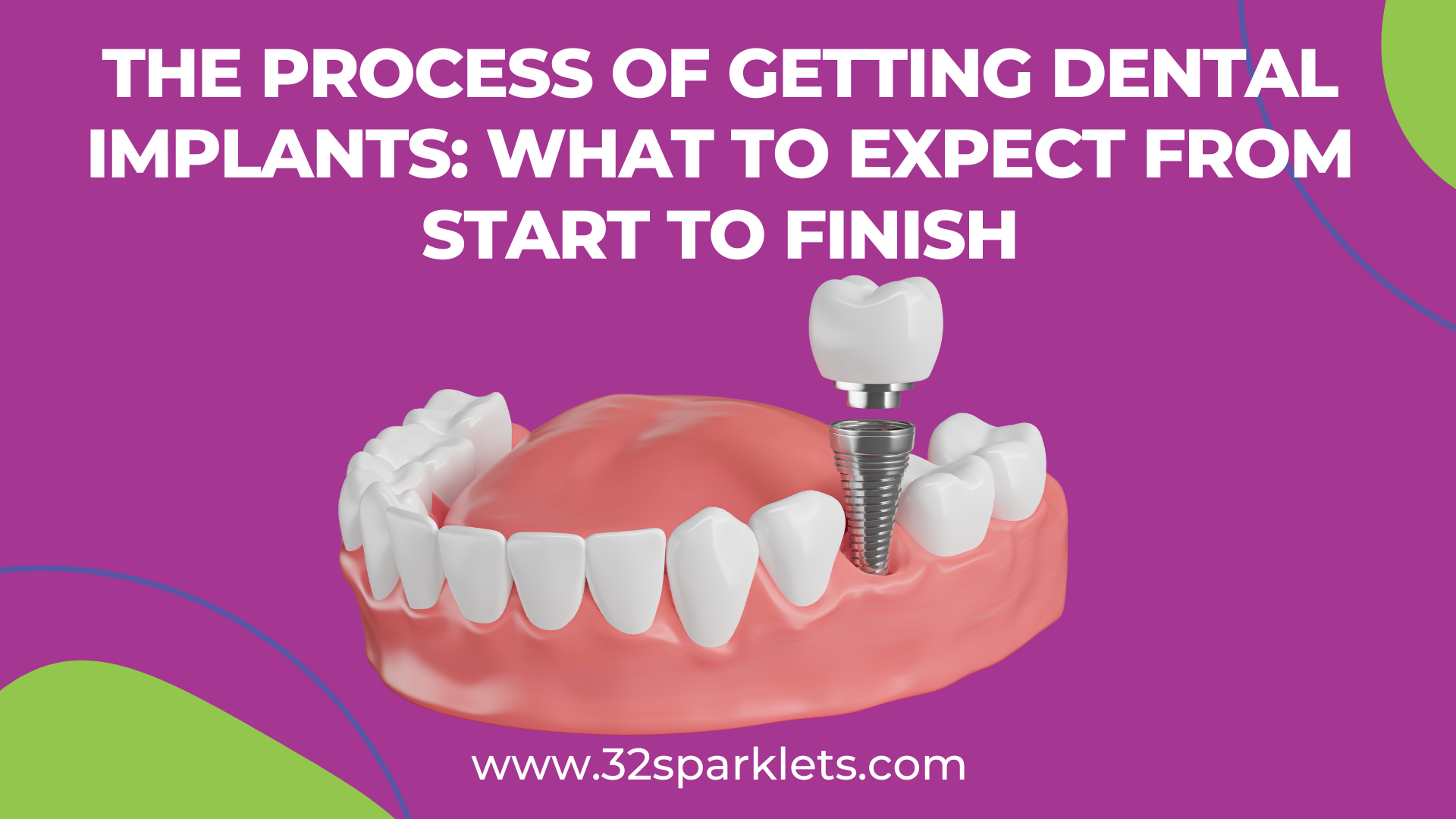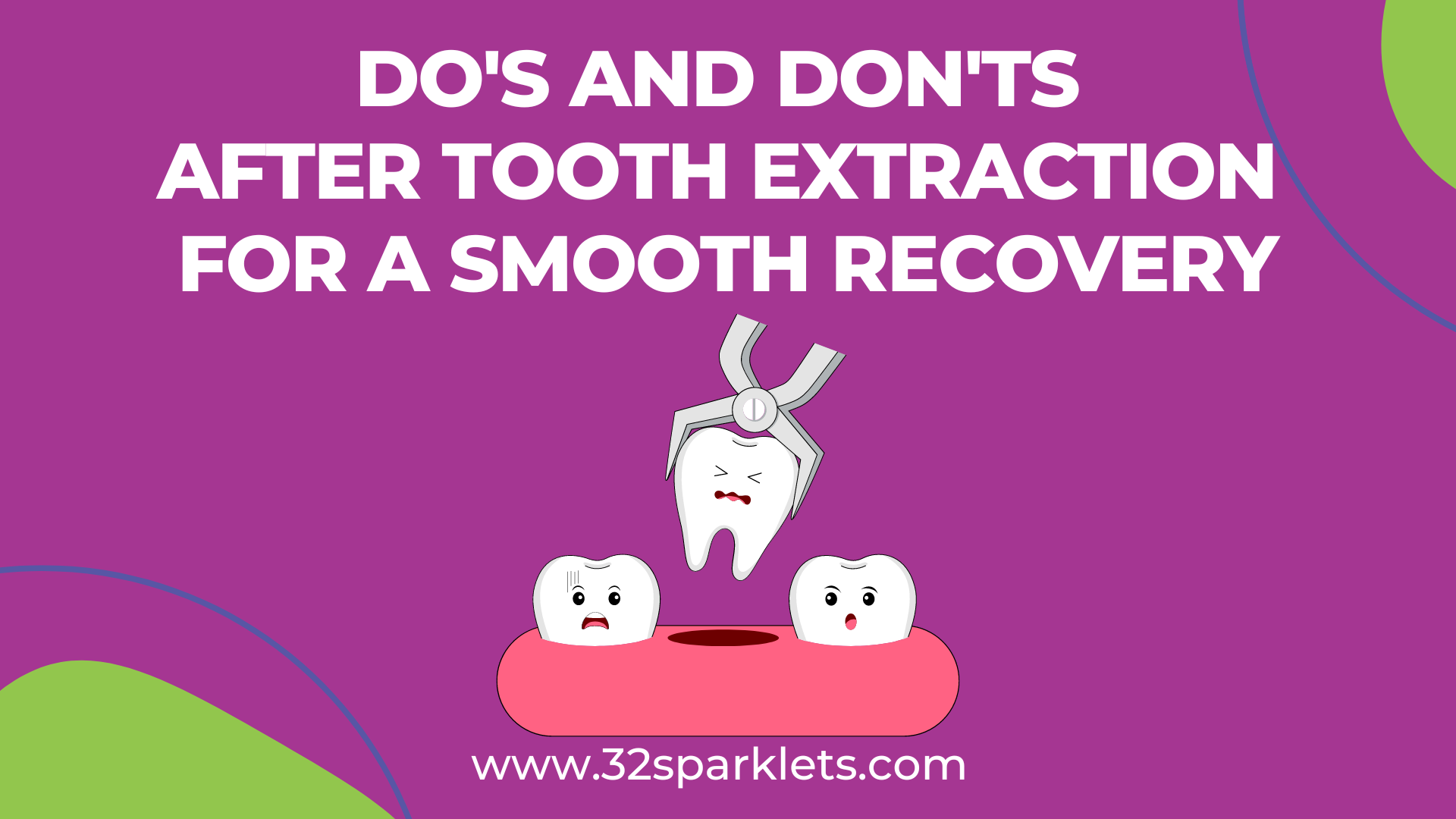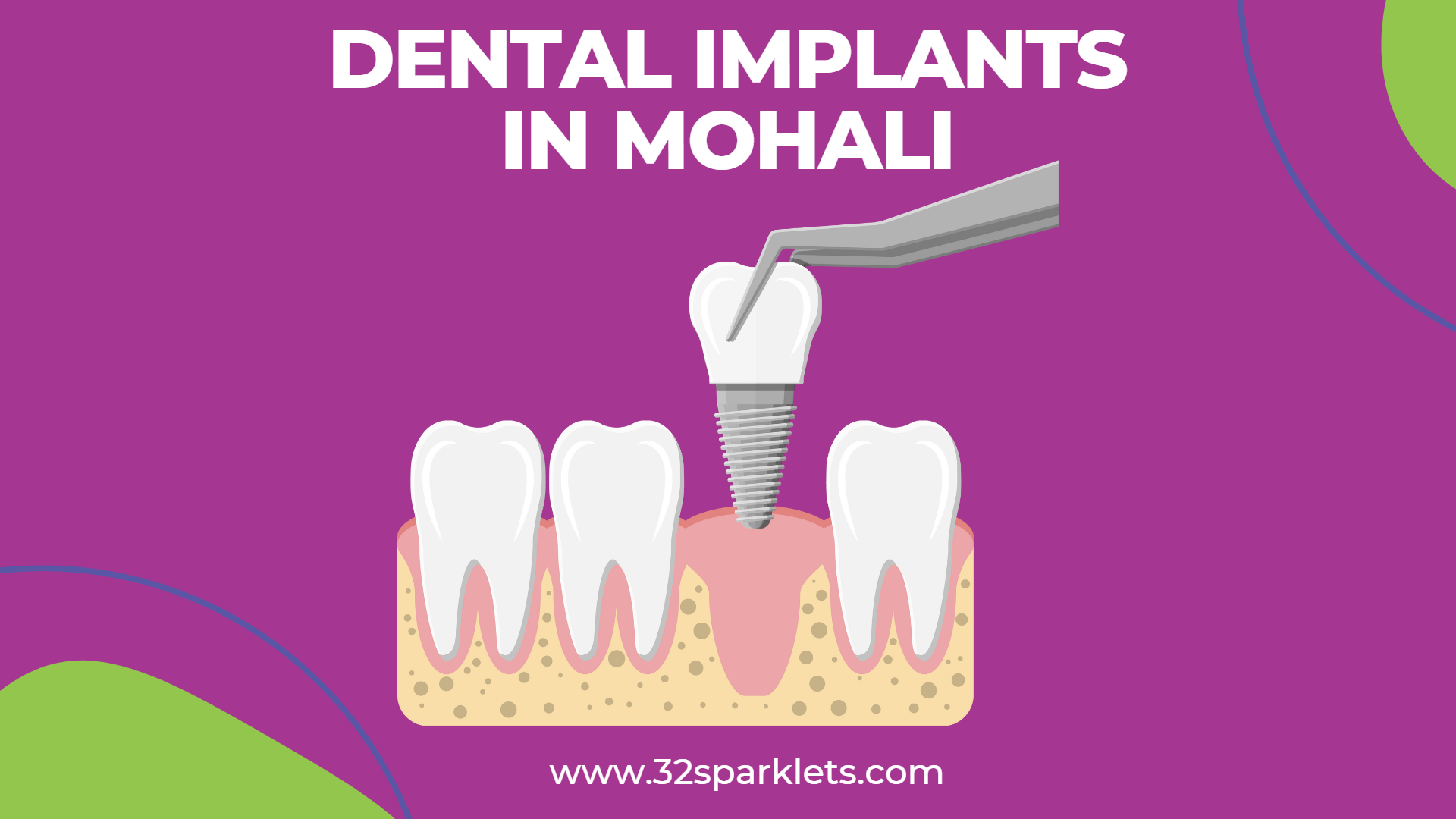Do you have missing teeth?
Yes! Why don’t you visit us for Dental Implants?
In this article, we will go into the details of the “Process of Getting Dental Implants”.
Our patients are often very confused about what exactly dental implants are and how they are placed. Due to the increased awareness and popularity of dental implants today, anyone with a missing tooth is curious to know about Dental Implants. So, here is a detailed post on what dental implants are and what is the process of getting dental implants.
The Process of Getting Dental Implants
1. Initial Consultation: The First Step
The initial consultation for dental implants is most important as here we explain to you in detail what dental implants are, how they work, what is the cost of the implants, what company implants we use, and the duration of the procedure.
2. Evaluations and Preparations: Are You a Candidate for Dental Implants?
Before planning for dental implants, our Oral Surgeon will do a proper clinical evaluation. The space available, number of teeth missing, soft tissue, bone height and width everything is checked for. Our surgeon will take X-rays as well as impressions for models if required.
There will be a detailed questionnaire about your medical history, which we will ask you to conclude whether you are the right candidate for the implant surgery. Do tell us in detail about your medical history as well as any habits, like smoking, chewing tobacco, etc., if you are facing any issues with your health.
If needed, you would be asked to get written consent from your physician before planning the surgery. Also, we would advise some dental scans in case required.
3. Pre-Surgery Preparation: What You Need To Know?
When it is clear that we can go ahead with the dental implants there are a few things you need to remember:
- Have a good meal before coming for the surgery
- Do not skip any of the medicines you have been taking for other illnesses
- Remember to take the antibiotics prescribed by us
- You will have to follow all the precautions after the surgery
- You might have swelling after the surgery which is normal and will reduce in a few days
- An implant is a foreign body and there is always a chance that it will not be successful
4. The Implant Surgery: What Happens During The Surgery?
Implant surgery is a completely painless procedure. Here are the steps we follow:
- Apply a numbing gel to the area where we will be giving you the local anaesthesia.
- We will give you local anesthesia for a completely painless procedure and wait for a few minutes.
- Meanwhile, your face will be properly scrubbed and our surgeon will be preparing for the procedure to start.
- If there are retained teeth, the teeth will be extracted first.
- The soft tissue will be raised to examine the bone underneath.
- Drilling will start for the implant and the implant will be placed.
- If required, we will place a bone graft or/and PRF (for which your blood will be withdrawn before the start of the procedure for centrifugation).
- Depending on the situation a cover screw or healing abutment will be placed.
- All along the procedure, we will be taking X-rays simultaneously.
- The site will be sutured and a gauze pack placed.
- Post-operative instructions will be given to you which you will have to follow completely.
- Medicines will be prescribed which you should take without missing a dose.
5. Common Challenges and How To Overcome Them
There will be some discomfort after the surgery, for which you will have to take the medicines prescribed and follow the instructions given.
a. Pain and Discomfort: Pain is one of the most common discomforts you will feel, which is obvious after surgery. For pain, you would be given painkillers which you will have to take as and when prescribed.
b. Swelling: Swelling is another common post-operative challenge you might face after the surgery. In most patients, swelling is seen, which will reduce in 2-3 days. Apply an ice pack extra orally (from the outside) on the side of the surgery for the first 24 hours. This will help in reducing the pain as well as swelling. There is nothing to panic.
c. Bleeding: Before leaving the dental clinic we make sure there is no bleeding. It will only happen if you spit in the first 24 hours which you are not supposed to. Spiting in the first 24 hours creates pressure in the mouth which dislodges the clot formed for healing and might lead to bleeding.
d. Difficulty eating: After the surgery, you might not be very comfortable eating. The best thing to do is eat soft semisolid food from the opposite side at room temperature. You can also eat ice creams without nuts, or shakes. Remember not to use a straw.
Do not skip any meal. Try to eat as much as you can at short intervals. Drink a glass of cold water after every meal to keep the surgical site clean as you can not brush or rinse for the first 24 hours.
e. Risk of Infection:
There is always a risk of infection after every surgery. So, remember to take your prescribed antibiotics without skipping a dose and follow all the instructions. If still you feel something is not right, contact us immediately.
f. Numbness or Tingling: After the surgery, it might take a few hours for the effect of the anaesthesia to completely wear off. So, you need not worry, and the sensations will be back soon. In very rare cases, there can be an injury to the nerve during the placement of the implant. If there is such a situation (rare), you will be informed about it during or after the surgery, and the sensations will be back in a few weeks.
6. Healing and Osseointegration: The Recovery Phase
It takes 4-6 weeks for the implant to osseointegrate with your bone, i.e. for it to connect with the bone so that it can take the load. If a bone graft (bone substitute) is used along with the implant, it might even take longer and we will not be in a hurry to put a crown (cap) over it.
Implant surgery should be done with patience and given time to heal and recover for the long-term success of the implant.
7. Abutment Placement: Preparation To Connect Your Implant to The Crown
Subsequent X-rays will be taken in the coming weeks and when we find that your implant has osseointegrate well with the bone, we will start the process of placing the crown.
If there was a healing abutment during your surgery, we will remove it, place the abutment, take an impression and send it to the lab for the final crown. The healing abutment will be placed back and you will be sent home.
If a cover screw was placed during the surgery, we will again give you anaesthesia, open the gums slightly, remove the cover screw and place the healing abutment. You will be recalled after a week and the above steps will be followed.
8. The Final Crown: Completing Your Smile
Once the final crown comes from the lab, the healing abutment will be removed and the final abutment and crown placed. You can close in all the directions and check. It might not be comfortable at first. Give it 24-48 hours and revert back to us if you still find it difficult to adjust.
Once everything is done, enjoy your beautiful smile and good food.
9. Aftercare and Maintenance: Keeping Your Implant Healthy
An implant is an artificial substitute for a natural tooth and its care is crucial for its success and longevity.
a. Maintaining good oral hygiene: It is the first and most important step after the surgery. Make sure your oral hygiene is good after the surgery and throughout. As you can not brush or rinse for the first 24 hours remember to take a soft diet and drink water after every meal for a cleansing action.
After 24 hours start rinsing with warm water with salt (warm saline rinses), 4-5 times a day. Rinse after every meal and brush twice daily. Maintaining good oral hygiene is mandatory not only after the placement of the implant but throughout to increase the success rate of the implant.
A water flosser is a good investment and will help in keeping your implants as well as natural teeth healthy.
b. Avoid Smoking: The success rate of implants is quite low in smokers. If you are a smoker inform us before the procedure. Implants and cigarettes are not good friends.
c. Control your sugar levels: If you are a diabetic your sugar level should be under control not just during the surgery but also after that. A high sugar level can result in implant failure eventually.
d. Routine Dental Check-up: A routine dental check-up every 6 months is mandatory. We will take fresh X-rays and review the status of your dental implants.
e. Watch for signs of complications: Implants have a high success rate but still there is always a chance of failure. Implants come with a lifetime warranty, not a lifetime success rate. So, if you feel any pain or discomfort that is present even after a week, immediately visit us. The other signs can be, swelling beyond one week, pus discharge from the surgical site, delayed healing or opening of the stitches or loose implants.
Related: Do’s and Don’t after Tooth Extraction for a smooth recovery
10. Final Result: Enjoy The Benefits Of Dental Implants
Once the crown has been placed, you are ready to flaunt your beautiful smile and also chew with the tooth. Remember to visit us every six months for evaluation and maintain good oral hygiene with a toothbrush and floss. If we feel you are a bruxist or if you are getting multiple implants done, we will give you night guards to wear to prevent any unrequited high forces on the implants. You will have to wear them while sleeping. This will increase the success rate of your implants.
Take Home Message
Dental Implants are the latest and last resort if you have missing teeth. However, dental implants are related to many other things, such as good oral hygiene, sugar control, smoking, overall health, etc.
Always remember your natural teeth are the best thing you have and dental implants are only an artificial way of restoring them. At 32 Sparklets we make sure the first attempt we make is to save your natural teeth, and if we are left with no options we go for dental implants.




